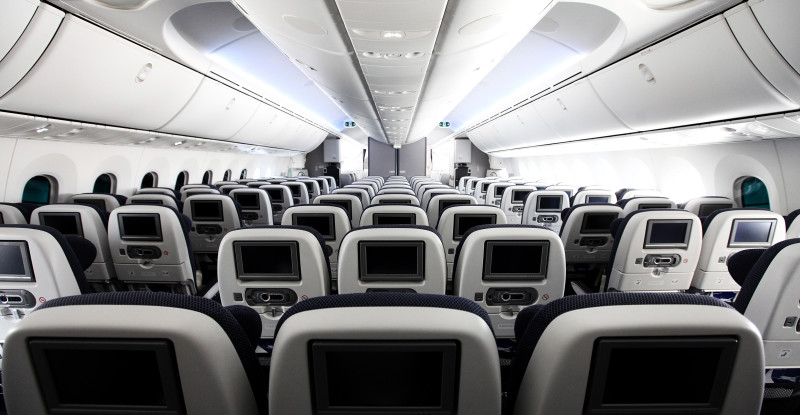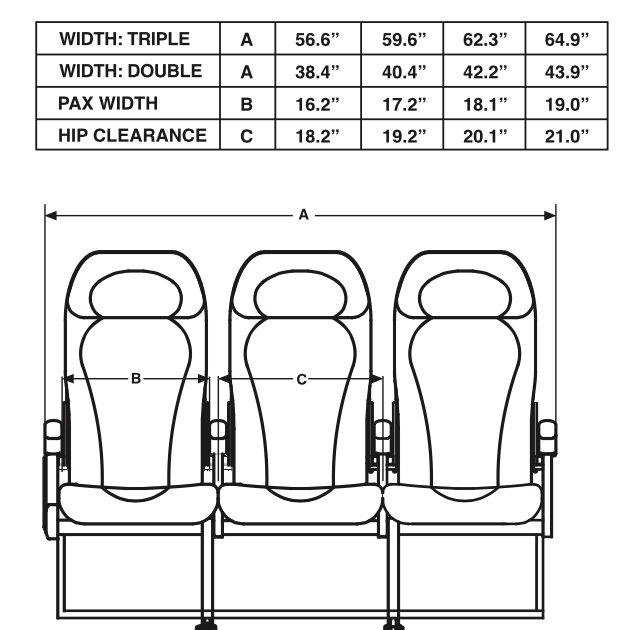British Airways is installing a new economy class seat on its Boeing 787-9 Dreamliner after negative feedback from passengers, Runway Girl Network can report.
The news comes from British Airways’ internal magazine Up to Speed, “the monthly magazine for British Airways employees, focusing on the strategy and the people who make the airline”.
Kathryn Doyle, who works on product development as British Airways’ Aircraft Product Cabin Interiors Manager, is quoted as saying, “Teams have been working on the plans for the cabin interiors, and in particular the evolved First cabin, for two and a half years.”
“Club and World Traveller Plus haven’t changed, but we’re putting a slightly wider seat into World Traveller. Front-line colleagues shared feedback from customers on the 787-8, who said the seats felt a bit tight,” Doyle says.
That’s some quintessentially British understatement there, with width a frequent complaint about 3-3-3 economy seats on a Dreamliner, and why the 787 has come to be seen by many as an aircraft to avoid.
“We listened to that,” Doyle continues, “and challenged our seat supplier to come up with a solution that would achieve parity with competitors and satisfy customers. The result is a seat that is half an inch wider, which we believe will improve customer comfort.”
It’s unclear where the extra half an inch per seat – 4.5 inches across the entire row of nine — will come from. British Airways has not yet responded to RGN’s request for information about where this extra width has been gleaned, nor regarding the measurements of the new seats. There are, however, really only a few options BA can choose from, which have all been tried in the industry previously.
The first option to discount is turning the Dreamliner into an economy class dream by operating an eight-across cabin. The seatmaps that clearly show a nine-abreast cabin (see below) dash that hope even more than Doyle’s oblique mention of “parity with competitors”, which does rather sound like “just as terrible as everybody else’s”.
The second possibility is a slimmed-down armrest. This, of course, is viewed by some as a spurious way to claim extra seat width (as Southwest tried to claim earlier this year), and is based on measuring seat width between the armrests rather than at the armrests: measurement B on the chart below.
Counting an increase in seat width based on measurement B would only be acceptable if airlines had always publicised their seat measurements that way; this is not the case.
The third possibility is that the airline has reduced the width of the aisles by 2.25 inches each. Regulatory minima for aisles are 16 inches between armrests, yet in reality anything less than around 17 involves a significant amount of hip-to-shoulder contact between passengers walking down the aisle and those seated in aisle seats. Boarding is slowed because rollaboard bags do not fit down the aisle, and service becomes more inefficient because trolleys become harder to navigate (as Air New Zealand discovered when its 2011 arrival of 3-4-3 Boeing 777-300ER aircraft, which had similar problems). This tension is not new — easyJet and Northwest both plumped for skinny seats and wide aisles on their A319 aircraft for faster boarding reasons — but neither is there an unlimited or consequence-free amount of space to slice from the aisle.
BA tried an ultra-narrow seating configuration in the late 1990s when it converted leisure 777s based in its Gatwick holidaymaker hub to a 3-4-3 layout, but was swayed to reverse its decision after customer complaints.
That BA has now had to modify its economy class in a second aircraft type suggests that it hasn’t learned from past mistakes.













